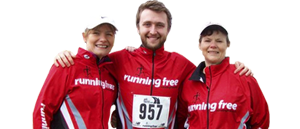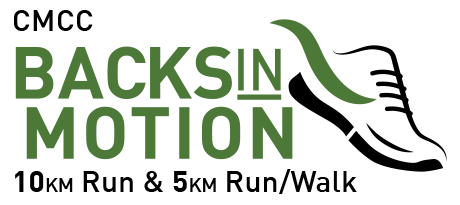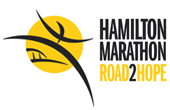First of all, this race follows a lovely course through Mississauga with beautiful scenery and good organization. Beyond that, I have nothing decidedly negative or positive to say about it. In fact, now having done both the Mississauga and Toronto races, the former may be my preference for a spring marathon.
In terms of results, I was aiming for sub 2 hours. Over the first few kilometres, my pace was bang on and I felt good. Then something funny happened. With every passing kilometre marker, the greater the discrepancy between the marker and the auto lap on my Garmin. By the half way point, the difference was hard to ignore, my watch was beeping a good 300 m before the marker. I couldn’t figure it out. Could my Garmin be that wrong? I do know that there are margins of error for a variety of reasons with the GPS technology but after running with this particular Garmin for the past three years, I’ve never had it over estimate the distance to that extent.
So, considering its sudden inaccuracy, after the half way point, I ignored the pace and distance on my wrist and ran by feel. Physically I still felt strong, slowed a little for the last few kilometres along the lake shore and finished in 2:03, well short of my goal. When I looked at my Garmin, the distance at the finish was 13.7 miles, a whole kilometre off of the course distance!
Over the next few days, I tried to figure out what had happened. There’s no way the course was long, well, certainly not that long. Could my Garmin be busted? No, I haven’t seen such discrepancies on any subsequent runs. Certainly there could have been issues with the satellite signal and weather conditions that day but even still, adding an entire kilometre to the distance seems unlikely.
A google search lead me to an article about running the tangents. For the most part, the half marathon course runs along wide, two or three lane roads with some decent curves. In recollection, I did do a fair bit of weaving around people and switching sides to hit or avoid water stations or just for the hell of it. I was completely oblivious to my actual route and minimizing the distance my two feet travelled.
When a race director sets a course, the distance is measured along the tangents to the curves, thus the shortest possible distance travelled. If while running, you follow the curve and don’t run the tangent (as well as weave in and out, switch sides, etc) you end up running a longer distance. Over the course of a half or full marathon this can really add up, as in my case, to an extra kilometre. So learn from my costly mistake and run the tangents!
What does this mean? Well, as soon as you reach a curve in the road or trail, look ahead for the next curve. When you see it, run a straight line to the inside of that curve. Don’t just follow along the road as if you are driving. This means that you may be in the middle of a curve when you start a new tangent. Sometimes in flat conditions if there are several short curves, you may be able to see more than one curve ahead of you, and you can run a straight line to the inside of the most distant curve.
This, my friends, is running the tangents. Live and learn.





















The difference travelled between the inside of a 50 m radius 90 degree turn and outside of a 55 m radius 90 degree turn is about 7.9 m. There is definitely savings to go after here, no doubt about it. However you would have to encounter about 120 of these corners to make up the difference you noticed on your Garmin. Mississauga just doesn’t have that many corners (although it might feel like it, especially near the lakefront).
The reality is that most Garmins are purposefully de-tuned by about 1% – 3% (extra distance), which can mean they will read between 13.3 and 13.5 miles for a certified 13.1 mile half marathon. If you take that inaccuracy into account, then you may have run – more realistically – about 300 m more than necessary. Unless the course was long, and that can also happen.
So yes, straight line your route from inside curve to inside curve. And always pace by course marker, not your Garmin distance. This is critical for pacing Marathons…and I had better know this, else Scotia would have fired me a long time ago.
Thanks for the well written report and selecting an interesting topic.
Dan M. (your 3:25 Scotia Waterfront Pacer)
Thanks for the comment (and math lesson) Daniel. I totally agree that the discrepancy can’t competely be attributed to not running the tangents. Garmin inaccuracy as well as my tendency to weave certainly contributed. I have realized that a pace band and pacing by course marker is certainly the simplest approach.